How can we ensure that each capsule or tablet has consistent efficacy? Their formulation must contain the same mixture of active ingredients and excipients. That said, blending is very important. Only when all ingredients are mixed uniformly can each dose deliver the same intended effect. So, how do you achieve such a homogeneous blend? One key tool is the pharmaceutical bin blender.
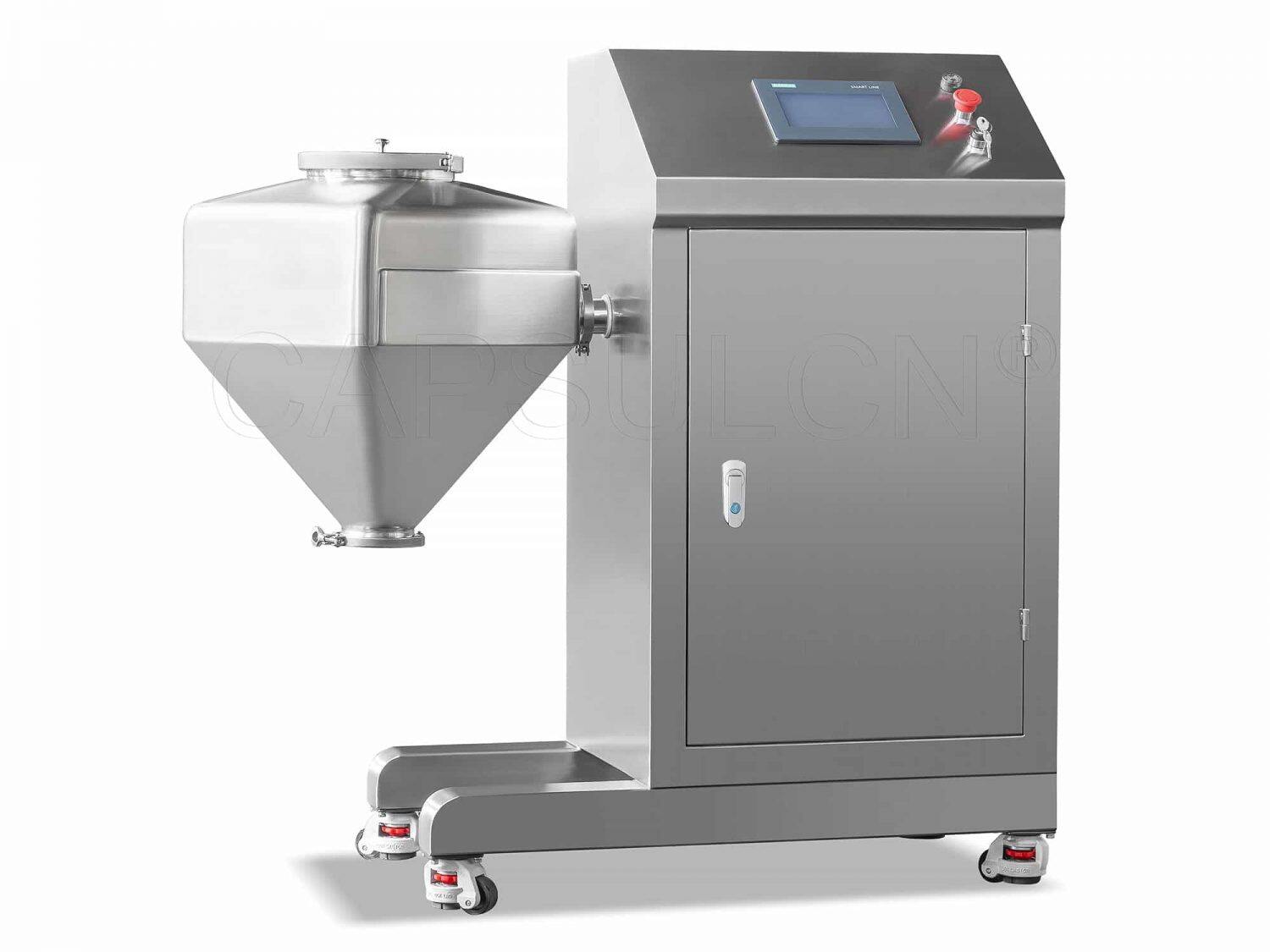
When people in the pharmaceutical industry mention bin blenders, they're usually talking about IBC (Intermediate Bulk Container) bin blenders. These are the go-to choices for blending in pharmaceutical applications. Today, in this post, we'll explore what bin blenders are, how they work, and why they're essential.
What is a Pharmaceutical Bin Blender?
A bin blender or IBC blender is a highly specialized machine used in the pharmaceutical world. Unlike other blending equipment, it works with detachable containers (often referred to as bins or IBCs) to mix and blend powders or granules evenly.
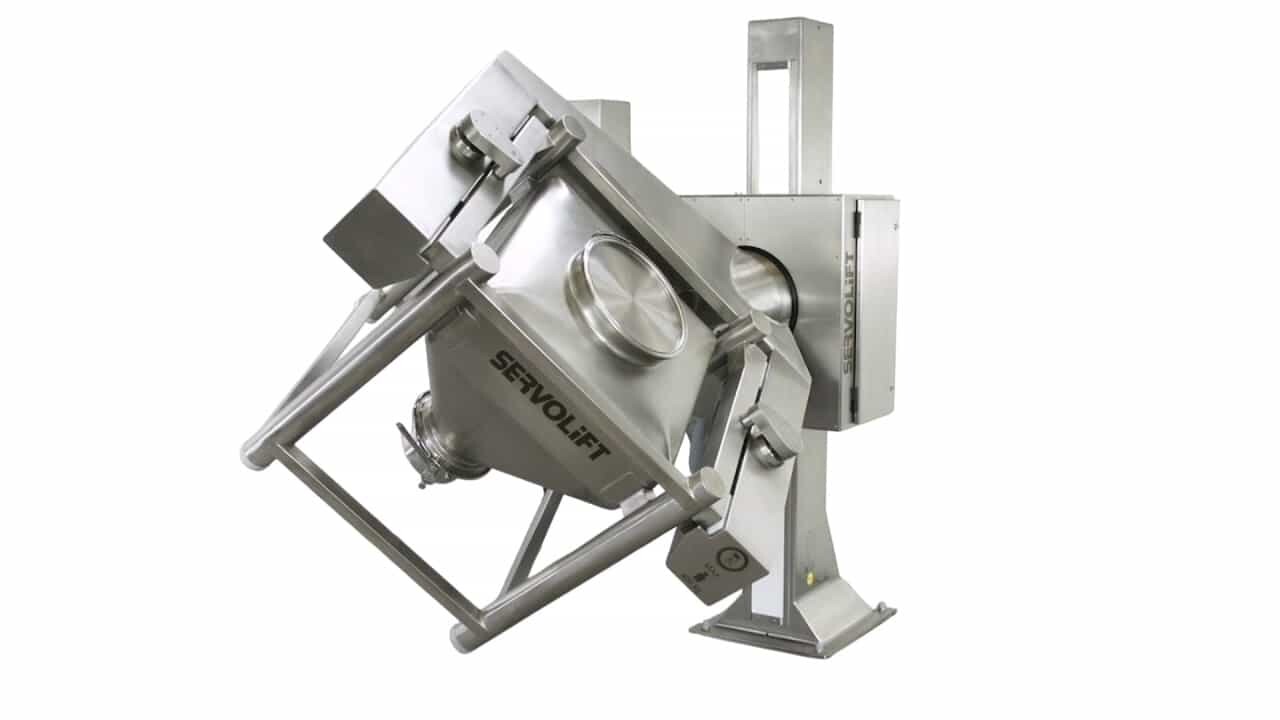
(Image Source: Servolift GmbH)
The blender works by rotating the container in a controlled motion. It ensures that all the ingredients are mixed thoroughly and evenly before they move on to the actual manufacturing process, like filling capsules or pressing tablets.
The equipment is known for gentle handling without causing any damage to the ingredients. The detachable bins allow manufacturers to use different bins for different products. This minimizes cross-contamination and makes cleaning much easier. Bin blenders are especially popular because they ensure consistent, high-quality blends that are essential for making reliable pharmaceutical products.
Common Types of Bin Blenders in the Pharmaceutical Industry
Pharmaceutical bin blenders come in various types based on different criteria. Here are some of the common types that you'll find on the market.
First off, let's take a look at 2 types featuring different shapes.
Square Bin with a Cone
This kind of bin blender basically comes with a sturdy, boxy container that has a cone-shaped funnel attached. The core idea is that the square shape provides ample space for tumbling while the cone helps gather and direct powders for quick discharge.
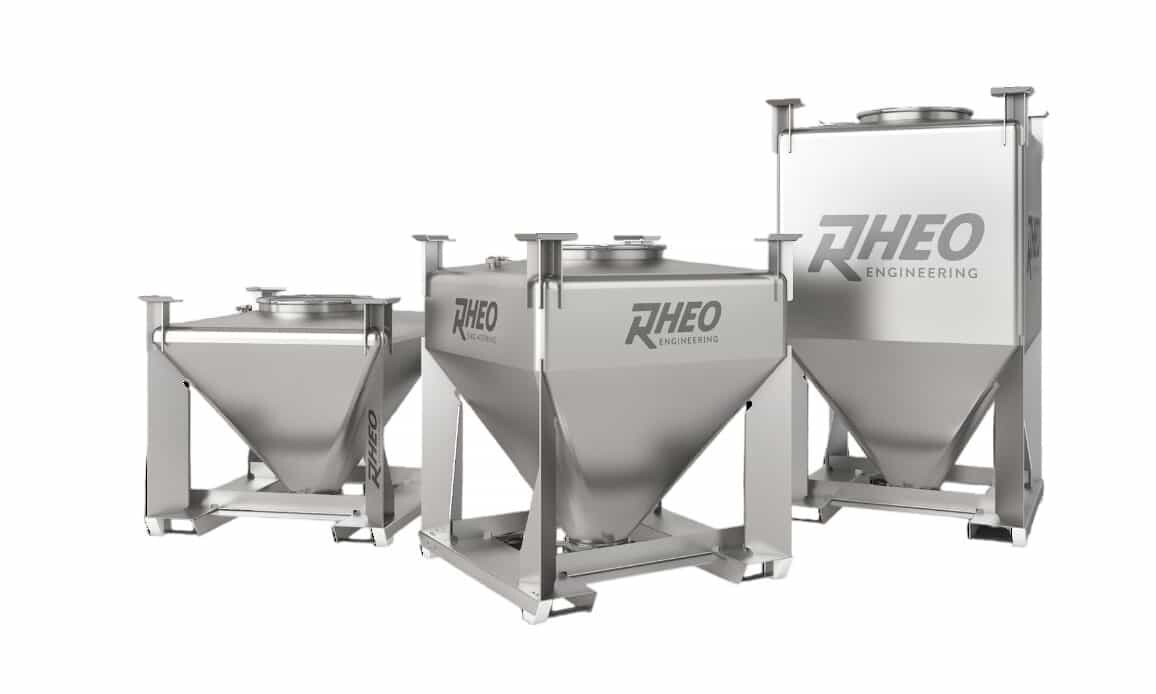
(Image Source: Rheo Engineering)
How It Works:
STEP 1 - Start by loading your powdered ingredients into the square bin. This step can be done manually or by relying on equipment like a vacuum feeder.
STEP 2 - As the bin rotates, powders naturally flow through the cone section and back to the square section.
STEP 3 - The rotation ensures that all ingredients are lifted up and then cascade back down, with no "dead spots" remaining.
STEP 4 - After a set mixing time, a well-blended batch is discharged through the cone section into a collection bin or fed directly into the production equipment.
Advantages:
- The square shape makes the bin easy to handle and secure during the mixing process.
- The cone helps funnel powders together, making discharge thorough and fast.
- The square bin has a bigger room for ingredients to tumble and mix.
- It's often simpler to scale up for larger batches.
Round Bin with a Cone
This pharmaceutical bin blender looks a bit like a big drum with a tapered cone section. Compared to the square type, its curved interior walls allow powders to roll, tumble, and slide more easily during rotation.
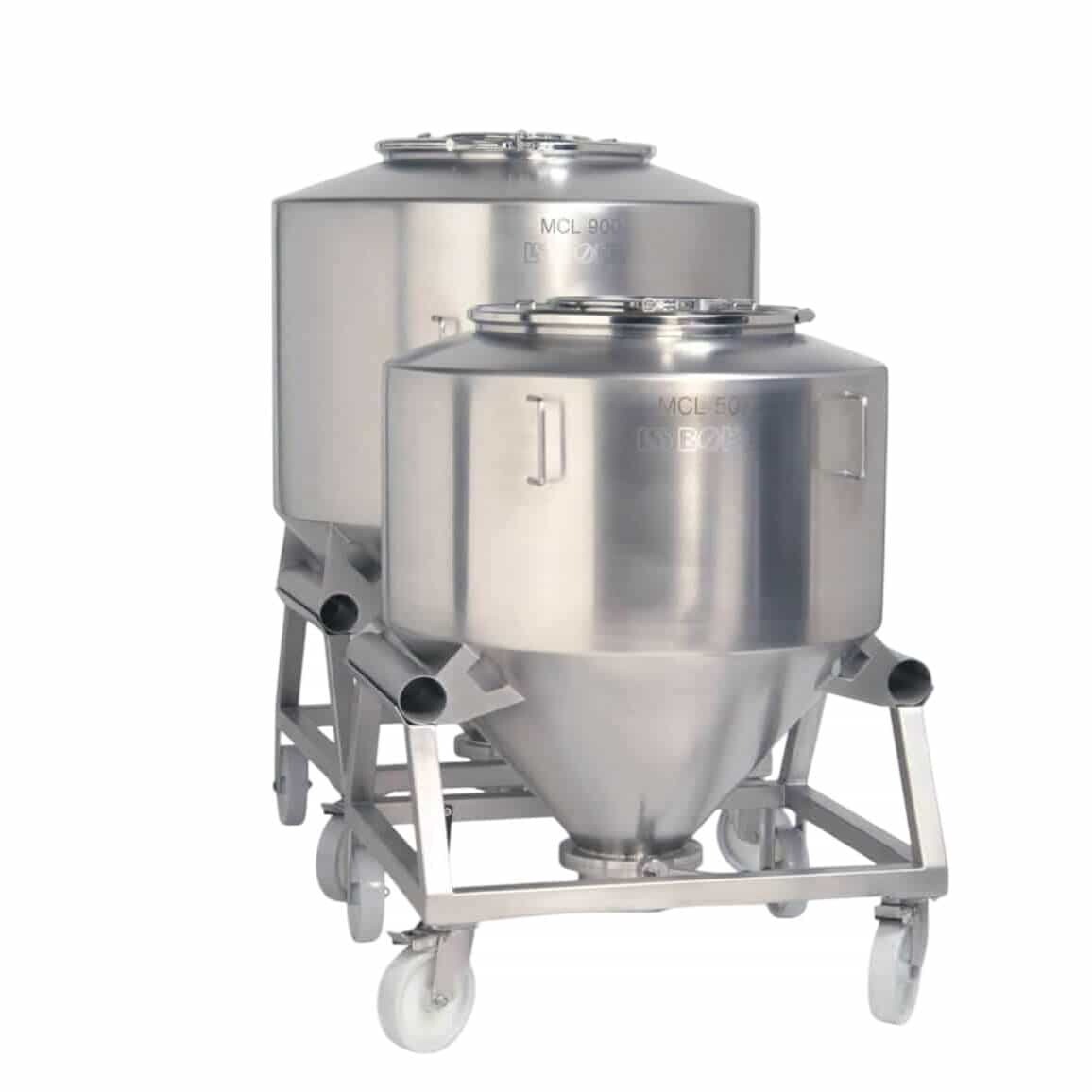
(Image Source: L.B. Bohle)
How It Works:
STEP 1 - Load your powders into the circular bin from the top.
STEP 2 - As it spins, the round shape encourages a gentle rolling action rather than a corner-to-corner tumble.
STEP 3 - The circular bin keeps rotating, ensuring that all ingredients pass through a common mixing point.
STEP 4 - After a set period, you end up with an even mixture from the discharge outlet at the bottom of the cone section.
Advantages:
- The round shape creates a smooth interior surface for natural, gentle tumbling movement.
- The blending can be easier on sensitive materials that might break down under harsher mixing.
- It's ideal for ingredients that flow easily or for processes.
- The absence of sharp corners helps minimize leftover material stuck in corners or edges.
Aside from shapes, IBC bin blenders can also be classified into 2 types depending on their mobility.
Fixed Bin Blenders
These are stationary units that remain in one place. They are either mounted on the blending equipment or installed on the wall of a dedicated blending area. Fixed blenders are often designed for consistent, high-volume mixing tasks.

(Image Source: United Pharmatek)
How They Work:
STEP 1 - The powdered or granular ingredients are loaded into the bin.
STEP 2 - Once loaded, the bin starts rotating. The blender usually allows for precise control over the mixing speed and duration.
STEP 3 - After blending is complete, the uniform mixture is discharged from the bin through the discharge port. Since the blender is fixed, a collection bin needs to be positioned beneath the discharge port to catch the mixture.
Advantages:
- Their stationary nature offers greater stability. You don't need to move the bin around the factory floor.
- They can be designed for both laboratory applications and higher production volumes.
- Although they occupy a fixed space, their design can be optimized to fit seamlessly into the production layout.
Mobile Bin Blenders
As the name suggests, these bin blenders can be easily moved around the production facility. They're quite common in various industries. Their bins often rest on casters, allowing operators to relocate them for processing, cleaning, or maintenance.
Unlike fixed bin blenders, their bins and blending units are separate. The bin needs to be moved to the specific processing area by operators. The blending unit usually features a frame and a column with a lifting system to secure and lift the bin during the process.
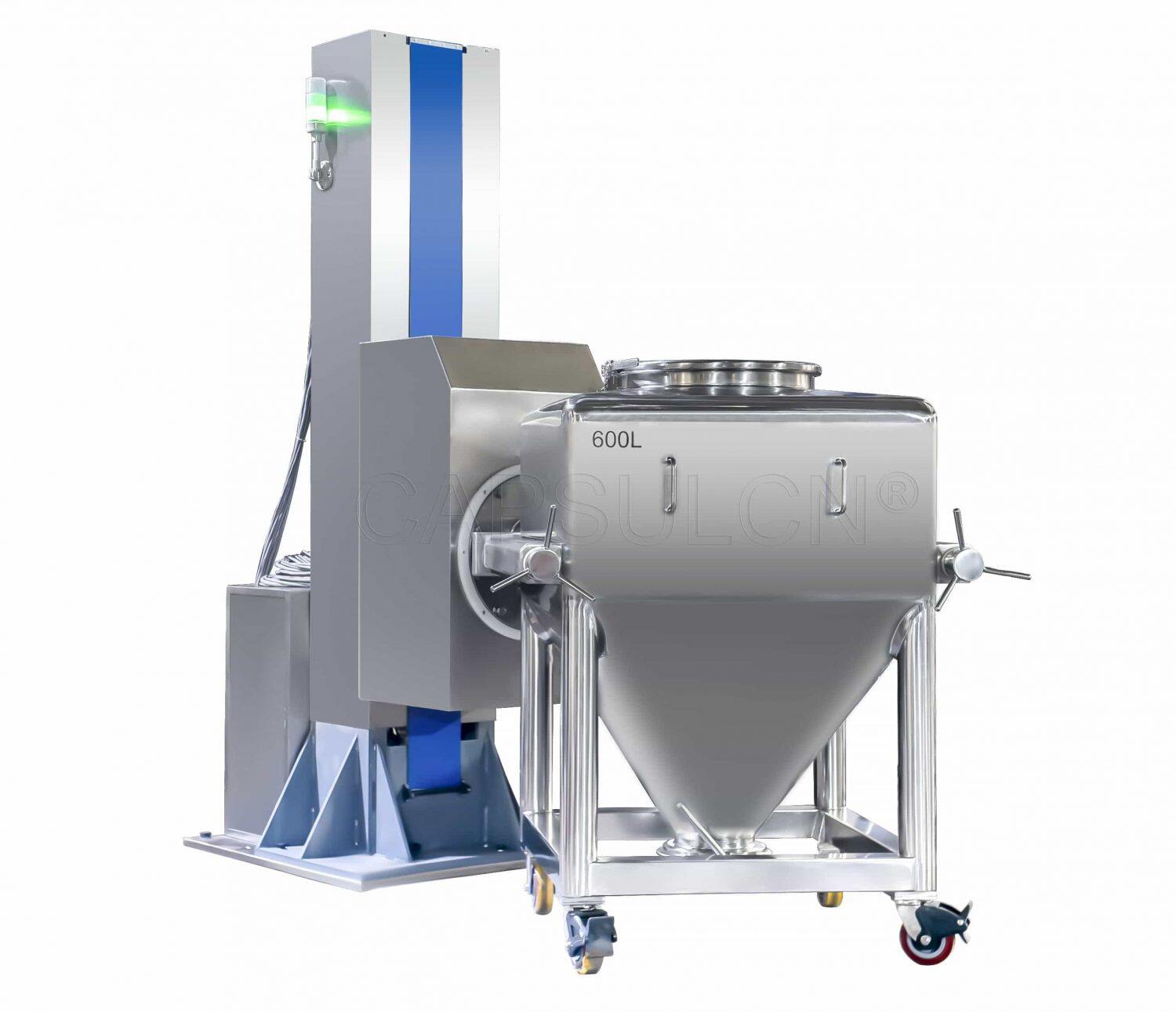
How They Work:
STEP 1 - Ingredients are loaded into the bin. Sometimes, they're already in the bin since the container can also serve as storage.
STEP 2 - The bin is moved to where the blending unit is.
STEP 3 - The bin is pushed into the frame and locked for lifting and tumbling.
STEP 4 - Once everything is ready, the blender lifts the bin and rotates it to mix the ingredients thoroughly.
STEP 5 - After mixing, the bin is lowered to the ground and then relocated to another spot for discharge.
Advantages:
- Mobile bin blenders are more flexible. They can be relocated to different areas as needed.
- When not in use, they can be moved out of the way, freeing up valuable floor space for other activities or equipment.
- Being movable makes it easier to perform cleaning, maintenance, or inspections.
- The blending unit can be compatible with bins of various sizes, which means these blenders can meet varying production demands.
Pharmaceutical Bin Blender vs. Other Blending Equipment
I bet you're curious about the differences between bin blenders and other blending machines. Check out this comparison table—it'll give you a clear picture!
| Feature | IBC Bin Blender | Double Cone Blender | V Blender | Ribbon Blender | Paddle Blender |
| Design | Square or round bin with a cone bottom | Two cones joined at the base with a cylindrical section in the middle | Two cylindrical cones forming a "V" shape | A U-shaped trough with a helical ribbon inside | A U-shaped troupe with paddles on the shaft |
| Mixing Action | Gentle, rotating tumbling motion | Tumbling motion with gradual blending | Gentle tumbling, ideal for fragile materials | Continuous mixing with ribbon-like motion | Slow, thorough mixing with paddles |
| Capacity | Can be customed to meet different needs | Can be designed to meet diverse demands | Can be tailored to suit various requirements | Medium to High – Can accommodate large quantities | Medium to Large – Flexible for various batch sizes |
| Mixing Time | Moderate – Depends on batch size and material | Short to Moderate – Efficient for uniform blending | Moderate – Effective for thorough mixing | Short to Moderate – Quick homogeneous mixing | Moderate – Consistent mixing over time |
| Shear Level | Low to Moderate – Gentle to moderate mixing action | Low – Very gentle, minimizing product degradation | Low – Gentle handling to prevent material breakage | Low to Moderate – Balances thoroughness with gentleness | Low to Moderate – Suitable for non-cohesive materials |
| Suitable Materials | Handles powders, granules, and blends | Ideal for fragile and abrasive compounds | Best for sensitive and cohesive materials | Suitable for various dry, free-flowing ingredients | Effective for both dry and wet substance blending |
| Ease of Cleaning | Moderate to High – Depends on the mobility of bins | High – Simple design facilitates easy cleaning | Moderate – Smooth surfaces aid cleaning | Moderate – Ribbon agitators require thorough cleaning | Moderate – Paddles and shafts need regular cleaning |
| Maintenance | Regular – Due to size and complexity, maintenance can be intensive | Low to Moderate – Fewer moving parts reduce maintenance | Low to Moderate – Simple mechanics ease upkeep | Moderate – Requires upkeep of ribbon agitators | Low to Moderate – Paddles and bearings need attention |
| Noise Level | Moderate to High – Larger motors may produce more noise | Low – Smooth operation generates less noise | Low to Moderate – Generally quieter operations | Moderate – Ribbon agitators can create some noise | Moderate – Paddle movement can generate noise |
Frequently Asked Questions (FAQs) about IBC Bin Blenders in the Pharmaceutical Industry
1. What exactly is an IBC bin blender?
An IBC bin blender is one of the most common blending equipment used in pharmaceuticals. It's specifically designed to handle powdered or granular materials. IBC stands for Intermediate Bulk Container, which is essentially a big reusable and detachable container. So, think of a pharmaceutical bin blender as a robust machine that can thoroughly blend ingredients right inside these large containers, ensuring your meds have a consistent mix every time.
2. How does an IBC bin blender work?
It's pretty straightforward! You load your raw ingredients into the IBC container and then attach it to the blender. The machine then rotates the container, causing the powders to tumble and mix together uniformly. It's like shaking a snow globe, but way more precise!
3. What are the top benefits of using an IBC bin blender in pharma production?
There are several perks! First off, they're super efficient for handling large batches. They also offer consistent mixing, ensuring each batch has the exact right composition and potency. Plus, many pharmaceutical bin blenders are versatile and adaptable to different production needs. And let's not forget—they're designed to be easy to clean, which is crucial for manufacturing medications.
4. Are IBC bin blenders easy to maintain?
Yes, they are designed with it in mind. Most IBC bin blenders come with features that make disassembly straightforward, reducing downtime between batches. Regular maintenance typically involves checking moving parts, ensuring the lifting and rotation mechanisms are smooth, and cleaning the containers thoroughly to prevent cross-contamination.
5. Are IBC bin blenders suitable for both small and large-scale productions?
They're primarily built for large-scale operations because of their high capacity and efficiency in handling big batches. However, different sizes and configurations are available, so you can find an IBC bin blender that fits smaller production needs, too. If you're scaling up, a pharmaceutical bin blender can grow with you, making it a flexible choice for expanding businesses.